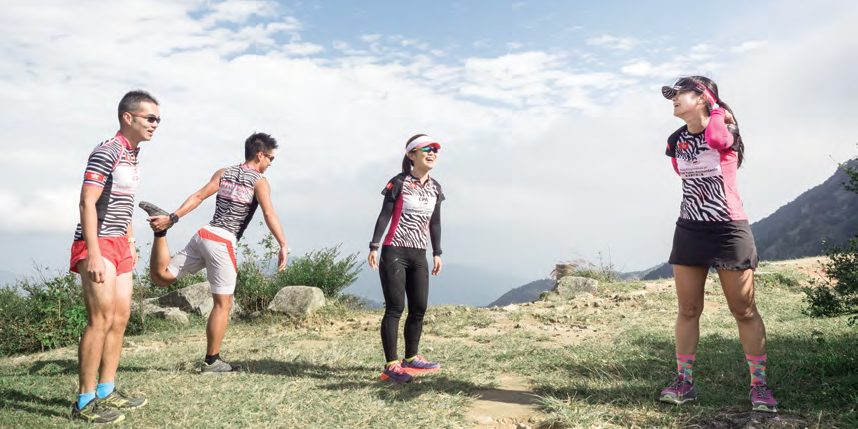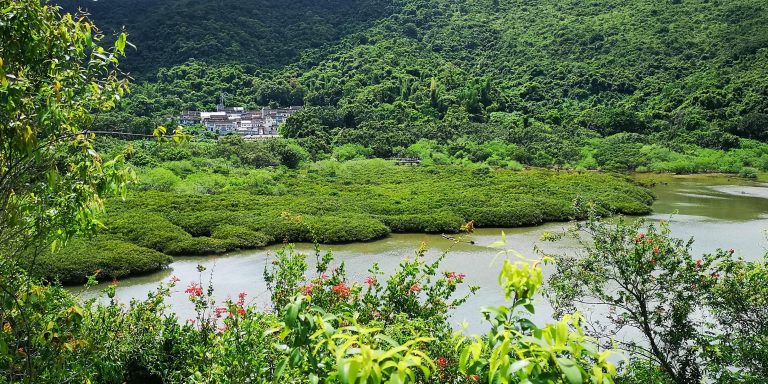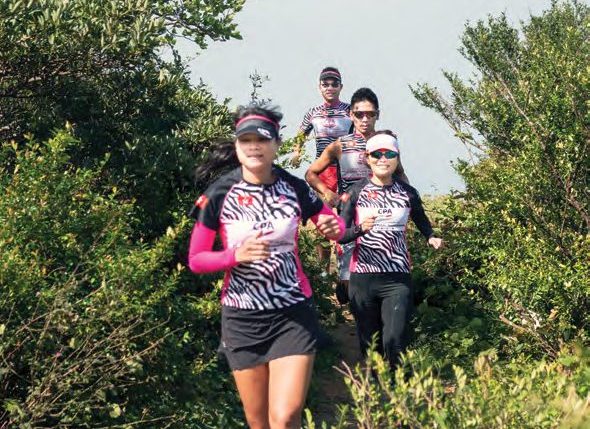With his hand firmly gripping a hot cup of coffee, Greg Lo relives the frightening moment he experienced during his first Trailwalker. “I suddenly turned pale, had the cold sweats and started shaking,” says the retiree. “Then three of my teammates carried me upside down so blood would reach my head,” he recalls. Despite facing heat exhaustion, he was unwilling to give up on the race he had trained so hard for.
With the help of his teammates, he got up, and trudged onwards to the next checkpoint. “I remember asking for Coca-Cola, and our support team luckily managed to get a can from the medical team,” he says. “That sugar was the best thing because that got me up and running for the next 70 kilometres.”
“That sugar was the best thing because that got me up and running for the next 70 kilometres.”
The Oxfam Trailwalker, which this year takes place on 16-18 November, is one of the city’s largest fundraising sports events. Nearly 100,000 participants have raised over HK$530 million to support Oxfam’s poverty alleviation and emergency relief projects in Africa and Asia since 1986. It takes place every November along Hong Kong’s longest hiking trail, the MacLehose Trail, which crosses much of the New Territories, starting from Pak Tam Chung, Sai Kung in the east to Tuen Mun in the west of the New Territories. With only nine checkpoints along the way, participants battle uphill terrain, changing weather, and extreme lethargy to complete the race within a 48-hour time limit.
 Greg Lo (second from left) and Pearl Chau (third from left)
Greg Lo (second from left) and Pearl Chau (third from left)
Never giving up
The arduous race commands a high level of stamina from all competitors, and many begin training half a year in advance, practicing on different sections of the MacLehose Trail to build endurance. Pearl Chau, Assistant Finance Manager at British American Tobacco Group, and Team Captain of the Institute Trailwalker team EQUUS QUAGGA BURCHELLII, says one section of the trail, known as the Double Au, is particularly horrible. Spanning 57 km, the route is so demanding that participants have to train before attempting it. “It has a total elevation of 3,200 metres, so it’s very tough on your feet and calves,” Chau says. “If you complete that in eight hours, you would be able to finish the whole trail in about 18 hours,” she adds.
Chau has taken part in the Trailwalker each year since 2002, and looks forward to improving on her finish time every subsequent year. Determined to bring home the Oxfam Trailwalker medal, commemorating the race’s 30th year anniversary (the race opened to the public in 1986, after five years for service personnel only), she joined the Institute’s team in 2011 along with Lo, who she met on the CPA Trailwalker chat group. Lo, who was reluctant to join in the first place, put his name down as a fill-in runner to boost the team’s chances of being selected for the event. After securing positions in the race, and knowing he could not withdraw from it, he gave the race a go.
“The Oxfam Trailwalker is a platform that will help you become stronger, and become part of your growth and development. I suggest CPAs to try it.”
Armed with items such as hiking poles, a headlamp, and supplements such as energy bars, gels and a bottle of water, Lo took part in his first Trailwalker in 2011. Chau says: “I remember I had to keep Lo going. I kept on telling him to not give up – we all wanted to secure that medal.”
“It was pouring when we were at checkpoint four, Gilwell campsite,” recalls Lo. “It was night time too, so we couldn’t even see the trail! It had been raining heavily for a week before the race, so the trail was very muddy and slippery. It felt like every time we took a step forwards, we slipped two steps back.” Battling road conditions, blisters on their feet and sleepiness, they made it to the finish line. While they didn’t win the medal, the race won Lo’s heart, and he has gone on to participate in more Trailwalkers.
The feeling of crossing the finish line is something Chau never tires of. “Every race is a battle, and I feel happy to win,” she says. “The Oxfam Trailwalker is a platform that will help you become stronger, and become part of your growth and development. I suggest CPAs to try it.”
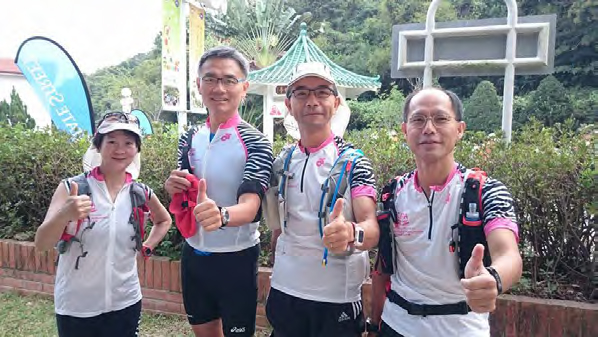
Gordon Liu (second from right)
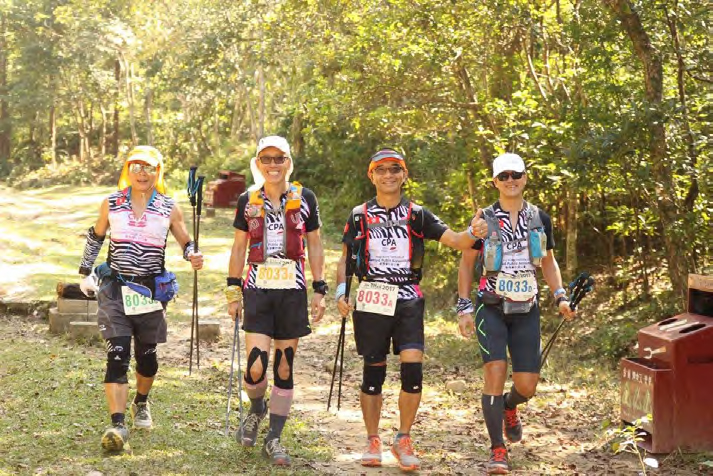
Gordon Liu (second from right)
Fueled for the finish line
On the same team is Gordon Liu. Currently retired, he worked at a non-government organization from 2012 to 2015. “I would get off work at 6 or 6:30 p.m., so that gave me plenty of time to train.”
An avid runner himself, Liu heard of the event through the Institute’s Athletics Interest Group in 2008, but stuck to running marathons until attempting his first Trailwalker in 2012. He has since completed five trail runs, and the experience has taught him the importance of food on a trail walk. “At the beginning of every November, we have a logistics meeting and everybody writes down what they want to eat and drink,” he explains. “We have people standing at five support points along the trail, and these people supply runners with their food of choice. Some runners want a burger, or a chicken drumstick, and some want drinks such as Gatorade or orange juice.”
Having the runners’ favourite foods scattered along the trail ensures competitors don’t consume too much at one support point, and also gives them something to look forward to when things get tough. “They can think ‘if I walk another 5 km, I can get sushi, and if I walk another 10 km after that, I can get a chicken drumstick,’” says Liu.
“If you’re running at 4 km an hour, don’t overdo it – stick to it. Try not to follow the faster runners.”
His team also brings snacks and supplements on the run. “I would ask my team to eat along the way, bit by bit.” Runners usually eat at least two hours before the event, and control their intake of food during the run. Too much food can result in indigestion and severely affect performance. “Some of my teammates have vomited and couldn’t even keep water down,” he says. “Once the vomiting starts, it takes several hours to recover.”
Liu knows it can be tempting to stay ahead of the race, and advises participants to perform what they practiced. “If you’re running at 4 km an hour, don’t overdo it – stick to it. Try not to follow the faster runners,” he urges. “You might really hurt yourself.” Training hard each Saturday in preparation for the event next month, he wants an even bigger challenge. “This year, I am walking without hiking poles. I want to see how far I can go.”
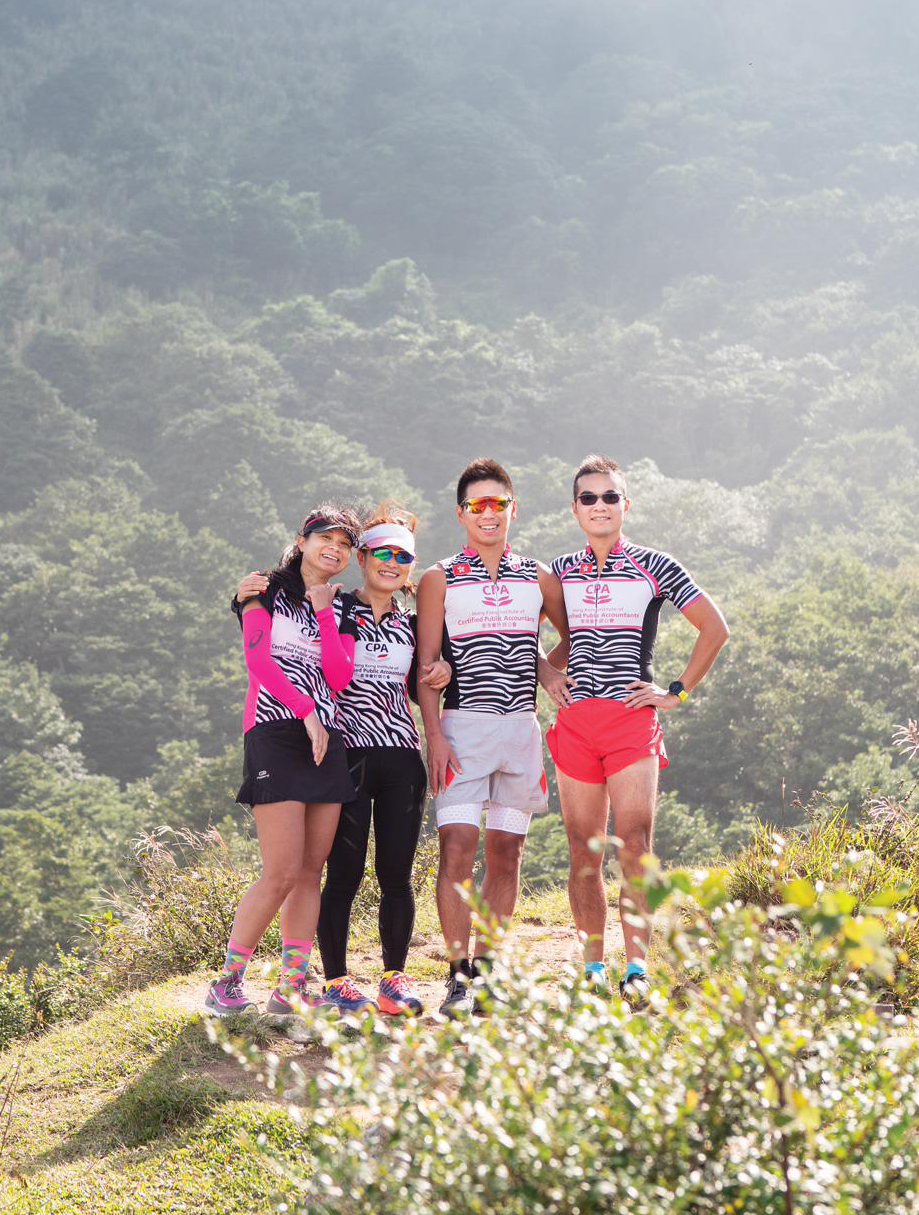 (From left) Suzanne Liu, Aqua Tsang, Ronald Wong and Albert Au
(From left) Suzanne Liu, Aqua Tsang, Ronald Wong and Albert Au
Every minute matters
For team Sara, time is of the essence. Since 2015, teammates Suzanne Liu, Aqua Tsang, Ronald Wong and Albert Au have been committed to outdoing each year’s finish time. Au, a Company Secretary of a listed company is this year’s team captain, and in charge of organizing training sessions, and setting time goals. “We want to beat last year’s time of 17 hours and 28 minutes.”
With the team busy training for other endurance events throughout the year, they make each workout count. “To build team spirit, it is important to train together, so when we are all free, we gather on weekends to do 50 km walks on the hillside.”
Tsang, Financial Analyst at a listed company, was team captain at the beginning. She learned of the event through her husband, a trail walker. The memories of previous years’ events are still fresh in her mind. “It’s always toughest after 70 km,” Tsang says. “I feel like I’m about to faint and have to run slower and slower – I keep up by relying on my hiking poles more, and I tell my teammates to wait for me.”
She says her team’s secret is effective time management. “If you want to finish the race in under 16 hours, you need to jog when the trail is flat or when you are going downhill. Also, don’t spend too much time at a checkpoint – just grab your food, drinks and leave!”
“To build team spirit, it is important to train together, so when we are all free, we gather on weekends to do 50 km walks on the hillside.”
Wong, Project Manager at a listed company, and Suzanne Liu, Financial Analyst at a sourcing company, both joined in 2016. Wong explains why setting a time goal is crucial. “We have schedules for each checkpoint,” he explains. “If we arrive at a checkpoint too early because we are rushing, we know we will suffer later, because it means we have used up too much energy. But if we arrive at one five minutes too late, then that affects the arrival time at all future checkpoints.” He adds that this strategy also increases their chances of finishing each race slightly quicker.
The team has experienced their fair share of ups and downs. “The race is full of surprises,” he says. “In 2015, I was stung by a bee and couldn’t feel my leg for half an hour. I had to rest at the next checkpoint but luckily it wasn’t so serious.” Liu also recalls how half of her shoe’s soles completely came off the following year. “I used my arm warmer to tie the sole back onto my shoe,” she laughs. Au remembers: “Luckily, my friend had a spare pair of shoes at the next checkpoint, but they were men’s trailrunning shoes and too big for her. She still wore them and completed the next 65 km!”
Tsang, who is running her seventh Trailwalker next month, says she will never forget completing her first race. “After finishing the Oxfam Trailwalker for the first time, I cried. It almost felt like graduation day again,” she laughs. “I wanted to say ‛mom, I did it!’”
Since 1986, more than 98,000 participants of Oxfam Trailwalker have raised over HK$536 million to support Oxfam’s various poverty alleviation and emergency relief projects in Africa and Asia, including Hong Kong and Mainland China.






